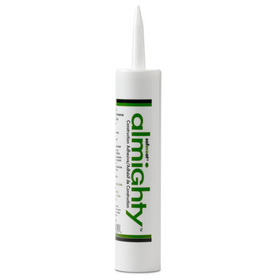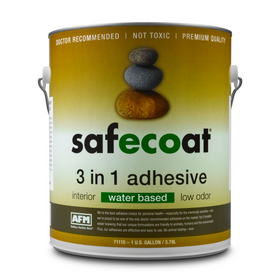
Modern meets Rugged in this 950sqft Minnesota Cabin
Last Updated: Feb 13, 2025The Northwoods of Minnesota is a region of boreal forests, wetlands, and glacial lakes stretching from the Mississippi River’s headwaters in the central part of the state to the North Shore of Lake Superior on the east. Nestled within its varied topography are cabins, traditionally of the seasonal variety.
Mention a cabin “Up North” and what usually comes to mind is a ramshackle structure. Plain on the outside, whether made of split logs, plywood sheets, or some other commercial material, the typical cabin has few windows. Inside it’s dark, which nonetheless helps retain heat generated by a propane tank or wood stove. The décor is probably “woodsy,” with a bear, white-tailed deer, or moose motif.
All of which leads family members and visitors to refer to the cabin as rustic, nostalgic, or quaint. It’s a base from which to fish and canoe, to hike and relax, to rough it albeit with a roof over your head. That’s not the kind of cabin, however, that the Walsh family had in mind.
“We’ve been going up to the North Shore for the last ten years or so, since after our daughter was born,” says Daniel Walsh. He lives in Minneapolis with his wife Elizabeth, and their daughter. “We love it and have always rented cabins. But having big dogs has made that increasingly difficult.” By big dogs, he means big—a Samoyed and a Newfoundland—so the Walshes decided to build their own cabin in the woods.
Table of Contents
- An Unbuildable Site
- Windows for a Modern Feel
- Using Every Square Inch
- Clean Simple Living

Three years ago, they found a parcel overlooking Caribou Lake, which they’d kayaked and enjoyed. “The property once had a cabin, which had sat on railroad ties, but it had been removed,” he says. The Walshes weren’t looking to build anything similar.
“I’ve always been a fan of modern architecture, and have always wanted to build something modern at an affordable price point,” he says. The cabin also had to be as low-maintenance as possible, exceptionally dog-friendly (meaning, durable and easy to clean) and built with local, sustainable materials.
He found Sara Imhoff, owner, and principal of Imprint Architecture and Design, LLC, Minneapolis, to bring the family’s cabin idea to life. She’d worked on several LEED-certified cabins in Washington state.
“In many of those projects, we made sure, upfront, that the wood sourced was coming from a sustainable forest, a local company, or from the property itself after a windstorm,” she explains. “Sourcing materials upfront was a driver to make sure the cabin would be LEED certified. The Walshes wanted a similar approach.”

An Unbuildable Site
A primary challenge was the property itself. The three-acre parcel includes one-half acre along the lakeshore, a county road that bifurcates the property, an elevation change of 30 feet, and surface that’s mostly solid rock.
“Set back requirements between the lakefront and the centerline of the county road made the property unbuildable,” Walsh adds. “But we got a variance for a set up that matched old cabin, which meant we had to stay within that building footprint. We were fine with that. A smaller footprint meant we used fewer materials and resources, and it made the cabin more affordable.”

Windows for a Modern Feel
Siting the 900-square-foot cabin for cool breezes in the summer and maximum solar gain in the winter was another challenge. “Sara and I spent a full day up there deciding how to minimize the impact on the trees, and position the building for sun and views. She did a nice job with that.” Adds Imhoff, “We staked out the cabin three or four times.”
“Cabins designed with a modern aesthetic are more outward-looking than traditional cabins in the woods,” she continues. “Having a connection to the environment is important in a natural setting, and large windows connect people inside the cabin with the outdoors. That grounds you as to why you’re there.”

“Now, given the way windows are made today to be energy efficient, architects can use windows to capture light and solar heat gain, and foster that connection with the outdoors—without the need for artificial sources of electricity,” she says. “Windows are a big driver in making a cabin feel more modern.”
Walsh adds that because of the cabin’s size, large and floor-to-ceiling windows would bring in “lots of natural light from every angle, warmth from the bright winter sun, and a feeling of living outdoors.” Two operable windows downstairs, along with the screen porch, capture breezes off the lake in the summer, as do operable windows upstairs, eliminating the need for air conditioning.

Using Every Square Inch
The Walshes wanted to make sure “every square inch was purposefully designed to be used,” Imhoff says. “The cabin uses space to its highest potential.” The interior includes a kitchen, great room, two bedrooms, a flex space, 1.5 bathrooms, a laundry/mudroom, a mechanical room, and plenty of storage.
Radiant heat in the polished concrete slab—finished with a water-based sealer, and easy to clean after big dogs with dirty paws have come in from the lake—keeps the cabin warm. A wood-burning stove provides ambiance and another source of heat. An inside door on the lower level can be closed to maximize or minimize heating zones.
Building Materials
Shop high-performance building materials that are vetted for benefits to your health, your pocketbook, and the planet.

AFM Safecoat Almighty Adhesive Case of 12
AFM Safecoat
In Stock

AFM Safecoat 3 in 1 Adhesive
AFM Safecoat
In Stock

Quickscrews Cabinet Install Screws
Quickscrews
In Stock

AutoSlide Automatic Sliding Door System
Autoslide
Out of Stock
2 Colors

Autoslide Smart Tag Pet Door Kit
Autoslide
Out of Stock
2 Colors

AutoSlide Elite iLock Smart Tag Pet Door System
Autoslide
Out of Stock
2 Colors

Quickscrews Pan Head Pocket Hole Screws
Quickscrews
In Stock

Autoslide Elite Smart Tag Pet Door Kit
Autoslide
Out of Stock
2 Colors

Autoslide Motion Activated Pet Door System
Autoslide
Out of Stock
2 Colors

Quickscrews Square Flat Head Wood and Particle Board Screws
Quickscrews
In Stock

Supplemental LED lighting, an HRV for fresh indoor air quality, an energy-efficient electric water heater, and dual flush toilets add to the cabin’s sustainable aspects. The walls are durable, inexpensive plywood; some were finished with a water-based sealer, others with low-VOC, Gold-certified Greenguard paint. Upstairs the bedroom floors have Eco-fi PET carpet tiles made of 100-percent purified plastic bottles. Damaged tiles can be easily removed and replaced.
For the Walshes, the idea of sustainability “was driven by the need for a small, low-maintenance cabin with longevity through the use of quality materials,” Imhoff says. The fir beams, for example, were left uncovered. “We didn’t use additional wood resources to make it look like there aren’t any beams,” Imhoff says. “They’re serving their purpose structurally and aesthetically. When you’re choosing materials that are serving their purpose and have a long lifespan, the amount of energy required for maintenance and upkeep is minimized.”

Clean Simple Living
Inhoff had the cabin clad in metal siding from Metal Sales, which has a branch in northern Minnesota. The company uses recycled metal with a long lifespan, Energy Star-listed coating that reduces solar heat loads, and a Declare label for red-label-free chemical coatings. She specified cedar, finished with a water-based stain, on the first level of the cabin’s north side. “The cedar, a natural material with a long lifespan, is tucked underneath the entryway, so if ever the Walshes need to refinish that material, it’s easily accessible,” Imhoff says.

The cabin incorporates Marvin Windows with sustainably sourced pine and aluminum (not vinyl composite or plastic), which are 20 percent more energy efficient than EnergyStar requirements for the North zone (if U factors were around .25) and is manufactured locally in northern Minnesota.
The Walsh family has been enjoying the cabin since it was completed in August 2019. The open modern design, Walsh says, means “there’s nothing superfluous. We love the lake. We can’t see the other cabins and that’s part of the culture; being nestled into the woods with nothing unnecessary. We wouldn’t do anything differently. We absolutely love it.”
Camille LeFevre
Camille LeFevre is an architecture and design writer based in the Twin Cities.
